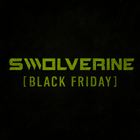TB500 vs BPC-157: Which Peptide Leads Recovery?
In the constantly evolving world of health, fitness, and performance, recovery has become just as important as training itself. Among the many compounds drawing attention, two peptides stand out for their powerful healing potential: TB500 and BPC-157.
TB500, a synthetic derivative of the thymosin beta-4 protein, is widely recognized for its ability to stimulate cell migration, repair tissue, and accelerate healing. In contrast, BPC-157, derived from a naturally occurring protective protein in human gastric juice, has gained fame for its remarkable effects on tendon, ligament, and gut repair.
While both peptides share the goal of enhancing recovery, their mechanisms of action, benefits, and applications differ in meaningful ways.
In this guide, you will learn:
→ The unique properties of TB500 and BPC-157
→ How each peptide supports muscle, joint, and tissue repair
→ Their key differences in performance and recovery outcomes
→ What athletes and fitness enthusiasts should consider when choosing between them
Whether you’re pushing your limits in the gym or recovering from injury, understanding TB500 vs BPC-157 could be the key to unlocking faster recovery and greater long-term performance.
What is TB500?
TB-500 is a brand/formulation name for a short TB4-derived peptide—specifically the N-acetylated 17–23 fragment (LKKTETQ) of thymosin β4 (the actin-binding motif).
Analytical work confirms that commercial TB-500 contains this N-terminal acetylated fragment (Ac-LKKTETQ).
Regulatory summaries note its status and lack of approved human use.
At a glance
→ Composition: TB4 fragment Ac-LKKTETQ (17–23)
→ Claimed actions track TB4’s actin/repair biology, but evidence is largely analytical/detection and preclinical, not approved clinical therapy.
→ Status: Investigational/controlled; monitored in anti-doping contexts. (PubMed, Therapeutic Goods Administration (TGA))
What is BPC-157?
BPC-157 (Body Protection Compound-157) is a stable gastric pentadecapeptide linked to cytoprotection and multi-tissue repair in preclinical models.
Mechanistically, studies suggest vascular and tendon/muscle healing effects.
At a glance
→ Origin: Gastric peptide; 15 amino acids (preclinical focus)
→ Evidence: Animal/in vitro data across GI, tendon/ligament, and nerve models
→ Note: Not FDA-approved; anti-doping scrutiny applies in sport contexts. (PubMed)
How TB-500 Works
TB-500 is not full-length TB4 — it’s the N-acetylated 17–23 fragment (Ac-LKKTETQ) that corresponds to TB4’s actin-binding region. Mechanistically, its claimed effects track the biology of that TB4 motif: regulating actin dynamics, driving cell migration, and supporting new vessel growth and tissue repair.
→ Actin dynamics & cell migration. The LKKTET(Q) motif binds G-actin, buffering monomers and regulating polymerization so cells can rapidly reorganize their cytoskeleton and move into injured tissue.
→ Angiogenesis (new vessel growth). By enabling endothelial cell migration and tube formation, the actin-binding site drives pro-angiogenic activity — a key step in granulation tissue and repair.
→ Pro-repair signaling. TB4 can upregulate VEGF via HIF-1α stabilization and engage pathways tied to cell survival and matrix remodeling; TB-500, as the active motif, is theorized to leverage overlapping routes.
→ What this means practically. By regulating actin availability and endothelial/mesenchymal cell movement, TB-500’s TB4-derived motif is proposed to speed cellular ingress, neovascularization, and matrix remodeling in injured tissues. (Evidence remains largely preclinical/analytical for TB-500 itself.)
How BPC-157 Works
BPC-157 is a stable gastric pentadecapeptide with a broad pro-healing, cytoprotective profile observed mainly in preclinical models. Mechanistically, its effects cluster around vascular remodeling, nitric-oxide (NO) signaling, extracellular-matrix repair, and inflammation control.
→ Angiogenesis & VEGF signaling. BPC-157 promotes new-vessel formation and supports muscle/tendon repair, with studies correlating its effects to VEGF up-regulation in vivo and in vitro.
→ Nitric-oxide system modulation (eNOS/NO). BPC-157 interacts with the NO system; reports indicate induction of NO signaling and eNOS-linked vasodilatory effects, which may underlie faster perfusion and healing.
→ Tendon/ligament & muscle matrix repair. In rodent models, BPC-157 accelerates healing of transected tendons and injured skeletal muscle, consistent with enhanced fibroblast/tendocyte activity and collagen remodeling.
→ Anti-inflammatory & cytoprotective actions (GI and beyond). Originally studied for gastric protection, BPC-157 shows multi-organ cytoprotection and inflammation control, which may translate to less edema and improved healing conditions.
→ Big picture (evidence base). Most data are preclinical; early orthopedic reviews note promise but emphasize the need for rigorous human trials.
Benefits of TB-500 for Recovery and Performance
TB-500 is the trade name for the N-acetylated 17–23 fragment of thymosin-β4 (the Ac-LKKTETQ actin-binding motif). This fragment underpins claims around cell migration and tissue repair.
Mechanistically, TB-500’s parent peptide (Tβ4) drives endothelial cell migration, tubule formation, and angiogenesis, processes essential for granulation tissue and perfusion during healing.
Broad reviews converge on Tβ4’s roles in repair/regeneration and inflammation control, which is why TB-500 is often positioned for “whole-tissue” recovery rather than a single tissue type.
Benefits of BPC-157 for Recovery and Performance
BPC-157 is a stable gastric pentadecapeptide with robust preclinical evidence in GI protection and musculoskeletal repair—particularly tendons and ligaments.
In orthopedics models, BPC-157 consistently speeds tendon and muscle healing, with data pointing to angiogenesis modulation (VEGF) during repair.
BPC-157 also interacts with the nitric-oxide system (eNOS/NO), which may underlie its vasodilatory and perfusion benefits during healing.
From a performance-recovery perspective, cell studies suggest BPC-157 can up-regulate the growth-hormone receptor in tendon fibroblasts—potentially priming tissue for remodeling alongside rehab.
Notes & context: Human clinical data for both TB-500 and BPC-157 remain limited; most findings are preclinical. TB-500’s composition is the Ac-LKKTETQ fragment of Tβ4, and many claimed effects are inferred from the extensive Tβ4 literature. Neither peptide is FDA-approved for performance or injury treatment.
TB500 vs BPC-157: Which One Is Right For You?
Both peptides are powerful healing agents—but their mechanisms and best uses differ.
Quick match-up (goals → pick):
→ General tissue regeneration → TB-500
→ Localized tendon/ligament repair → BPC-157
→ Gut-lining support/protection → BPC-157
→ Vascular remodeling & soft-tissue recovery → TB-500
→ Systemic inflammation modulation* → TB-500 (*BPC-157 also shows anti-inflammatory actions in preclinical data)
→ Neuroregeneration/brain–gut axis support → BPC-157
Potential Side Effects and Safety Considerations For TB-500 vs BPC-157
Although both TB-500 and BPC-157 are generally regarded as well-tolerated in preclinical studies, users should be aware of potential side effects. Individual response can vary, and all peptide use should be monitored under medical supervision.
TB-500 side effects may include:
→ Temporary redness, itching, or swelling at the injection site
→ Rare systemic symptoms such as fatigue, dizziness, or changes in blood pressure
→ Allergic reactions (uncommon but possible)
BPC-157 side effects may include:
→ Nausea, lightheadedness, or mild injection site irritation
→ Rare allergic responses or sensitivity reactions
Safety considerations:
→ Always source peptides from licensed compounding pharmacies or reputable peptide labs to minimize contamination risks.
→ Start with conservative dosing and monitor response closely.
→ Seek immediate medical guidance if adverse symptoms develop.
Conclusion
Both TB-500 and BPC-157 have earned attention in the performance and recovery space for their regenerative potential, yet they serve different purposes. TB-500 is best viewed as a broad-acting peptide that supports systemic healing, angiogenesis, and muscle recovery, while BPC-157 is more localized in action, excelling in tendon, ligament, and gastrointestinal repair.
While preclinical data is promising, it’s important to recognize that neither peptide is FDA-approved for human therapeutic use, and most evidence is derived from animal or laboratory studies. Responsible use requires sourcing from trusted compounding pharmacies, careful monitoring, and guidance from a qualified medical professional.
For athletes, fitness enthusiasts, or individuals recovering from injury, the choice between TB-500 and BPC-157 depends on the specific healing goals:
→ Choose TB-500 if systemic tissue regeneration, muscle growth, and vascular support are priorities.
→ Choose BPC-157 if tendon/ligament repair, gut health, or neuroprotective effects are the focus.
Ultimately, both peptides underscore the evolving role of peptide therapy in recovery science. With proper application and medical oversight, they may provide powerful tools for accelerating repair and supporting long-term performance.
Legal Status of TB-500 and BPC-157
Neither TB-500 nor BPC-157 is approved by the U.S. Food and Drug Administration (FDA) or other major health authorities for human therapeutic use. Both are typically sold as research chemicals and are not legally available for medical prescription in most countries.
→ TB-500: Primarily marketed in veterinary or research contexts. Its active component (Ac-LKKTETQ) is a thymosin β4 fragment identified in analytical and anti-doping studies.
→ BPC-157: Extensively studied in preclinical models but remains investigational. It has not been approved for any clinical indication in humans.
Both compounds are prohibited by the World Anti-Doping Agency (WADA), meaning competitive athletes subject to testing may face sanctions if detected.
Disclaimer
This content is for educational and informational purposes only and is not medical advice. TB-500 and BPC-157 are considered investigational peptides, and current evidence is based largely on preclinical or animal studies.
→ Always consult a qualified healthcare professional before considering peptide use.
→ Only obtain peptides from licensed compounding pharmacies or reputable labs to minimize contamination and safety risks.
→ The dosages and protocols discussed here are general references from published studies and experimental reports, not individualized prescriptions.
Use of these compounds outside controlled research settings may carry legal, ethical, and health risks.
FAQ: TB-500 vs BPC-157
Are TB-500 and BPC-157 the same thing?
→ No. TB-500 is a synthetic fragment of thymosin β4 (the Ac-LKKTETQ motif), while BPC-157 is a gastric-derived pentadecapeptide. Both support healing but through different mechanisms.
Which peptide is better for tendon and ligament injuries?
→ BPC-157 shows stronger preclinical evidence for tendon and ligament healing, thanks to its effects on angiogenesis, fibroblast activity, and collagen remodeling.
Which peptide is better for muscle recovery?
→ TB-500 may be more effective for broad muscle and vascular regeneration due to its role in actin regulation, cell migration, and angiogenesis.
Do TB-500 or BPC-157 help with gut health?
→ BPC-157 has been studied extensively for gastrointestinal protection, including reducing damage from NSAIDs and promoting gastric lining repair. TB-500 does not share this benefit.
Can TB-500 and BPC-157 be used together?
→ Some protocols pair them, with TB-500 supporting systemic recovery and BPC-157 targeting local tendon/ligament healing. However, this should only be done under medical guidance.
Are TB-500 and BPC-157 legal?
→ Neither peptide is FDA-approved for human therapeutic use. They are classified as research chemicals in many regions and may be restricted by anti-doping agencies like WADA.
What side effects should I watch for?
→ Both peptides are generally considered well-tolerated in preclinical studies, but mild injection-site reactions, nausea, dizziness, or rare allergic responses have been reported. Always consult a medical professional before use.







